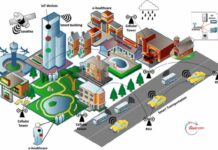
The smart meters market has been witnessing significant growth in recent years, states a recent study by Market Research Future (MRFR), a research body. According to MRFR, the global smart meters market would garner exponential accruals by 2023, registering over 8.7 percent CAGR throughout the forecast period of 2017-2023.
Smart meters can automatically send the collected data to the suppliers and users on their mobile application. Operators can get the meter reading directly on the cell phone or other devices through the application.
A smart meter can read and display the consumption of electricity, gas, and water and also helps in controlling their usages. It can show accurate real-time data and advanced data analytics for the day-to-day utilisation of electricity, gas and water.
MRFR also states that smart meters are fully automated and can switch-on and off the power supply on the command of a wireless software or handheld unit such as smartphone; therefore, eradicating chances of probable accidents in cases like gas/electricity leakages, etc. Smart meters are increasingly replacing the traditional meters owing to their advantages such as energy-efficient consumption control, etc.
Such advantages of smart meters save a whole lot of time and energy of operators, spent on a personal visit required to get the meter reading. In addition to the consumption information, the collected data also provides details about valve and battery status.
Additional factors driving the growth of the global smart meters market include rising government initiatives and mandates to implement smart meters in households and commercial application. These government initiatives are also spreading awareness about the smart and efficient usages of these meters.
MRFR also points out the challenges in the Smart Meters systems. “There are some glitches in these smart meters too, such as compatibility issues. Most of the smart gas meters are designed to be compatible with their suppliers. These supposedly smart meters installed in households are not adaptable to the other or the rival supplier’s connections. Switching suppliers needs reverting the meter to an inactive mode just as the good old traditional meters. Also, terrorists can use these meters for the surveillance and to snoop on citizens,” states MRFR.
“Such issues, coupled with the high initial cost of smart meters, are obstructing the growth of the market. Nevertheless, advancements in technology are already underway, which would eliminate these issues introducing a new centralised communications network,” MRFR adds.





















